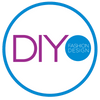Mastering the Art of Applying a 5/8" Seam Allowance with a Serger
Sewing enthusiasts often use a serger to create professional-looking projects with clean and finished edges. A serger, also known as an overlock machine, trims fabric edges, finishes raw edges, and sews a seam all at once. When utilizing this fantastic tool, it's important to understand how to apply a 5/8" seam allowance, as it is a commonly used dimension in garment construction. In this blog post, we will guide you through the process of achieving a perfect 5/8" seam allowance with your serger.
1. Adjusting the Cutting Width:
To achieve a 5/8" seam allowance, the first step is to ensure that the cutting width of your serger is appropriately adjusted. Most sergers have a dial or lever that allows you to adjust the width of the serger blade. Set the cutting width to the desired 5/8" measurement. If your machine lacks a specific marker for 5/8", use a ruler or measuring tape to set the width accurately.
2. Aligning the Fabric Edge:
Once you've set the cutting width, align the fabric edge with the guideline indicated on the serger throat plate. This guideline is typically marked in various measurements, including 5/8". Place the edge of your fabric against the guideline, and make sure it lines up consistently throughout the entire seam. This precision will ensure a consistent seam allowance.
3. Seam Allowance Testing:
Before proceeding to serge your entire project, test your seam allowance on a scrap piece of fabric. This step allows you to confirm that the serging width matches your desired 5/8" seam allowance. If it's slightly off, readjust the width until you achieve the perfect measurement.
4. Marking Seam Allowance Guidelines:
For beginners or projects requiring extra precision, consider marking your fabric with guidelines to ensure a consistent seam allowance. You can either use tailor's chalk or removable fabric tape to mark the 5/8" seam allowance directly on the fabric. This guideline will serve as your sewing reference when aligning the fabric edge with the serger throat plate.
5. Taking Extra Precautions:
When sewing curved edges or corners, it can be challenging to maintain an accurate seam allowance. In such cases, sew with slow and steady movements, constantly adjusting your fabric alignment to ensure the 5/8" seam allowance is maintained. It may take practice to perfect this technique, so don't be discouraged if it doesn't come easily at first.
6. Verifying the Seam Allowance:
After serging a seam, it's essential to double-check the seam allowance. Measure it using a ruler or measuring tape to ensure it consistently meets the 5/8" mark. Making frequent measurements throughout the sewing process will help you catch any deviations early on, so you can correct them before completing the project.
Applying a 5/8" seam allowance with a serger is an essential skill for any sewing enthusiast. By adjusting the cutting width correctly, aligning the fabric edge with precision, and employing additional techniques like marking guidelines, you can achieve professional-looking results. Remember to continuously recheck your seam allowance throughout the sewing process to ensure accuracy. With practice and attention to detail, you'll soon be creating impeccably finished garments and projects with your serger.
The adoption of a 5/8" seam allowance has become a common practice in the sewing industry. This standardization allows for uniformity and ease of use across different sewing patterns and brands. Sewists can rely on this consistent measurement when working with different commercial patterns, making it easier to switch between projects and achieve consistent results.
The 5/8" seam allowance in commercial sewing patterns has proven itself as the industry standard for a variety of practical reasons. It allows for alterations, professional finishing techniques, strength and durability, precise fit adjustments, and promotes consistency across different patterns. By understanding the significance of this particular measurement, sewists can improve their sewing skills, achieve better fit, and create beautifully constructed garments with confidence. So, the next time you start a sewing project, embrace the 5/8" seam allowance and enjoy the benefits it brings to your sewing journey.
